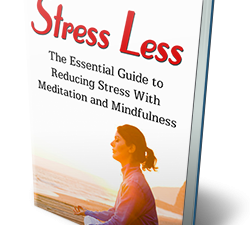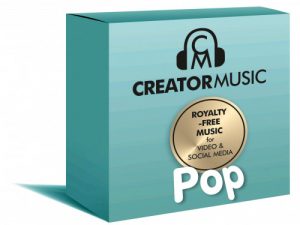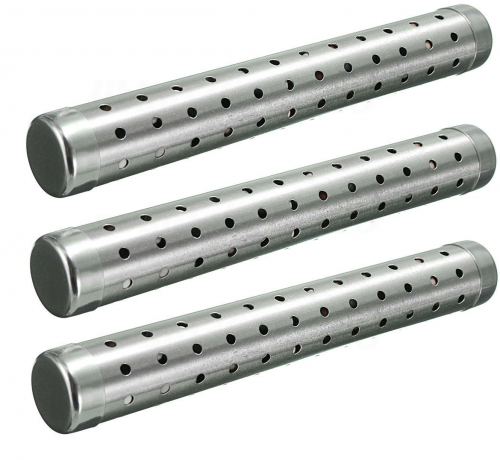Relaxing Music Meditation Music
Meditation has been derived from the Latin word “Meditatio”, meaning “align to the center”. Meditation is perfect for strengthening the body, mind, and soul and get them into balance.
The meditative state is neurologically measurable as a change in brain waves.
The heartbeat slows, breathing deepened, reduces muscle tension. Meditation has been part of the spiritual procedures in many religions and cultures. We distinguish passive meditation (mindfulness meditation or silence) and active meditation (yoga, dance, martial arts, mantra vocals).
Rhythmic sounds and music facilitate meditation significantly because every human being has got an innate musicality. Our ancestors knew about the power of music, which is reflected in many traditional and spiritual songs and prayers. The positive effect of music is also being used in music therapy.
The relaxing music contains quiet sounds in the background – mostly nature sounds such as flowing water – as a relaxing retreat effect.
It’s being used not only in meditation but also during massages, spa treatments, or in the private sector in their free time.
Meditation doesn’t always follow the goal of just relaxing. Movement can be an important part of it, too; that’s why meditation music is more than pure relaxation music which primarily wants to loosen tension and create a relaxed state of body, mind, and soul. Meditation Music contains relaxing music for passive meditation, but also covers a dynamic genre of drum or other lively music which supports active meditation!
Meditation Music
…can be divided into music with Eastern or Western influences and also a mix of East-Western Music (New Age). Eastern Meditation Music is often used for energy work, which has its roots in Asia, for example in Qi Gong or Tai Chi Chuan. This also includes the pure Sound Meditation with singing bowls, with their long-lasting sound. This sound often touches people deep in their souls and can have a healing effect in therapy. During the hippie era in the 60s and 70s, a blending of musical influences from East and West took place, as many Western musicians traveled to India, searching for inspiration.
Famous musicians such as Deuter, Karunesh, and Klaus Wiese mixed Indian musical styles with Western music to a whole new style of music that was known as the New Age.
This music represents a large part of today’s meditation music. You can hear traditional instruments of Asia, such as the sitar, tabla, or bamboo flute, as well as modern Western instruments such as piano and guitar.
It often contains interpretations of traditional spiritual songs and mantras (Mantra Music). Western Meditation Music mainly includes classical music or Gregorian chants.
Meditation music can be used as an element in the background or as a guiding element in the foreground. Meditation Music can also affect people by singing along (chanting). Music in a guided meditation (fantasy journey, chakra meditation, deep relaxation) is played with low volume, substituting the instructor’s words, to strengthen the relaxation and the meditation’s effect. An exception is the Shamanic Journey, which is usually performed by a steady, energetic drum rhythm. This rhythm does not lead to relaxation, but into a trancelike state.
In passive meditation, Meditation Music is mainly used for relaxation. During dynamic meditation, music is in the foreground. The tempo is usually fast and rhythmic. This music encourages the listeners to move and start certain physical, mental, and spiritual processes. Examples: the yoga practices such as the dynamic exercises in Kundalini Yoga, or as the Whirling Dervishes in Sufism.
There is also Meditation Music to sing along: Mantra Music. Here the Mantra is being sung repeatedly several times, while the mind is connected to the meditation’s subject.
With a Mantra, a “word of power”, energy is being released from a sound. Chanting is a part of yoga.
Healing Codes
The Solfeggio Frequencies
Some time ago a friend recommended me an article on the internet, speaking about the Solfeggio Frequencies. These are “forgotten frequencies” that do not exist in our common twelve-tone system and which have different positive effects on the human body.
As a musician, I was interested immediately and began to search the web for further, more profound information on these specific frequencies. Unfortunately, I realized that the only meaningful information was mere in the article my friend had sent.
So I searched for a book from which I could learn more about these mysterious frequencies. But unfortunately, only one could be found, written by a US dentist named Dr. Leonhard Horowitz. This man rediscovered the frequencies and their different effects on the human organism after many centuries of oblivion. In his book “Healing Codes for the Biological Apocalypse*” he made them accessible to the public.
We are talking about the so-called Solfeggio Frequencies that were already known to several ancient cultures and have been used for the alleviation and cure of physical and mental illnesses. Horowitz explains in his book:
Even the early Catholic Church knew of the Solfeggio Frequencies and their effects and put them in the context of the composition of numerous chorales, such as the Gregorian monk chants.
However, as these particular frequencies brought a mind-expanding effect to some listeners (and also to the singer or musicians), the Vatican started to see a menace to the ecclesiastical power structure and banned the Solfeggio Frequencies.
The different functions of the frequencies are based on the fact that all matter in our universe vibrates at a certain frequency. This fundamental vibration of matter and thus also of the human body can be affected and altered by exposing it to external vibrations in a different frequency.
This principle is also being used in alternative therapies, such as homeopathy or bioresonance therapy.
According to Horowitz’s theory, certain states of consciousness can be achieved by listening to the frequencies for a while. That way self-healing processes of the body are supposed to be triggered.
The 9 Solfeggio Frequencies with their vibration (Hz) and effect
- 174 Hz – reduce physical pain, connect with the earth
- 285 Hz – strengthen visual imagination and energy fields
- 396 Hz – liberation from guilt and fear
- 417 Hz – resonance with the universe, changes
- 528 Hz – miracles & signs
- 639 Hz – harmonious relations with our neighbors and partners
- 741 Hz – Awakening Intuition of own
- 852 Hz – the return to spiritual order
- 963 Hz – activate the pineal gland
Impressed by this theory, I started an experiment with a friend in which we tuned one of my synthesizers and an acoustic guitar to one of these frequencies; the Solfeggio Frequency with 417 Hz.
Usually, instruments and music are tuned to 440 Hz. When the instruments were tuned, we played about 30 minutes of pieces that we were recording at the same time. While playing on this frequency we got into a pleasant state of relaxation.
Also while listening to the recorded session we felt that relaxation, same as other friends who were shown our recording.
It hasn’t been scientifically proved that the Solfeggio Frequencies really have any of the mentioned effects, but I am convinced that these frequencies absolutely make a difference. The good thing: By using the frequencies, you can’t do anything wrong. They have no negative side effects at all. So if you just feel great while listening, why not use them as relaxing music for the mind and body…
Back To Nature
432 Hz Music
What is 432 Hz Music? Music can be so many things for us: joy, relaxation, and a healing “Soundcloud” – but also a cause of disharmony. A crucial factor in the effect of a musical piece is the standard pitch; a reference tone to which all instruments of a song must be equally tuned. The more similar this sound is to our “inner sound code”, the more benefits it will have on us; the more it differs from our “inner sound code” the more stress it will cause.
432 Hz Music…
can balance our brain hemisphere and that way strengthens emotional stability. It may help to enhance our spiritual development. And even more: With the sometimes called “sun sound” of 432 Hz we resonate with nature’s phi spiral which we find in almost all forms of life.
So isn’t this is a wonderful way to get into balance with nature, just by listening to music? When we’re exposed to “well-tuned” sounds for a longer period of time, it’s obvious that we can start to feel “tuned properly” ourselves.
The therapeutic effect of the 432Hz concert pitch was already known to ancient cultures. It has just been rediscovered as a very interesting topic for musicians as well as therapists of all kinds!
432 Hz Music sounds warmer and smoother, we also feel the sound in our stomach, instead of merely hearing it. It gives us a special feeling in our heart and along our spine… just try it yourself!
432 Hz sounds and feels more “round” – more “stable”. On the other hand, the current standard frequency 440 Hz expands in a more linear way. We perceive the sound more on the head’s side. 440 Hz stimulates our left brain (consciousness), which can cause stress and anxiety. Disharmony may increase further.
Sometimes, however, this effect can be wishful in music – for example in aggressive and activating dance music. But when it comes to relaxing, the 440 Hz sound is totally not desirable.
Rudolf Steiner warned of using this high frequency and was convinced that it has an effect on developing antisocial behavior. Sumerians, Egyptians, and Greeks tuned their instruments to approximately 432 Hz until the Romans insisted on changing the pitch again.
Even Mozart and Verdi insisted that their music should be played at around 430 to 432Hz! Only in 1939, the standard pitch was assessed to 440 Hz. Since then musicians worldwide, such as Luciano Pavarotti, Placido Domingo, Birgit Nilsson, Joan Sutherland, Montserrat Caballe, Richard Strauss, and many more requested to pitch lower again.
My personal experience with 432 Hz Music
It truly sounds much warmer and softer than the 440 Hz standard pitch of our today’s music. Besides 432 Hz, there are much more interesting frequencies, all with different characters and effects, such as the Solfeggio Frequencies, among many others!
I think it’s important to decide about using a frequency in context with the goal that wants to be achieved with the individual piece of music! For the music of the genres Funk or Swing, other tunings such as 437 Hz or 444 Hz (among many others) can be interesting, too.
Instruments can also sound very different according to their tuning: Strings and brass instruments such as violins or trumpets sound much louder with a high tuning.
444 Hz, for example, sounds extremely bright and lively – perfect for dancing and drawing attention to the sound. For pure relaxation 432 Hz is one of the best choices… it just “feels” right!
Subconscious healing
Facilitate Changes with Hypnotherapy
Guided Meditation & Self Hypnosis
Spoken By Clinical Hypnotherapist Karen Rowe
- The power of self-hypnosis – anytime and anywhere you need it
- Boost your healing process with effective hypnotic suggestions
- 30 minutes of deep meditation brings you new positive energy
- Facilitate changes with the help of your subconscious mind
- Play on any device: your smartphone, tablet, pc
Dream your body
Weight control with Hypnotherapy
Guided Meditation & Self Hypnosis
Spoken by Clinical Hypnotherapist Karen Rowe
 100% SSL-Encrypted
100% SSL-Encrypted


















Lisa K. –
The best relaxation music, I`ve really enjoyed 9 Solfeggio Frequencies